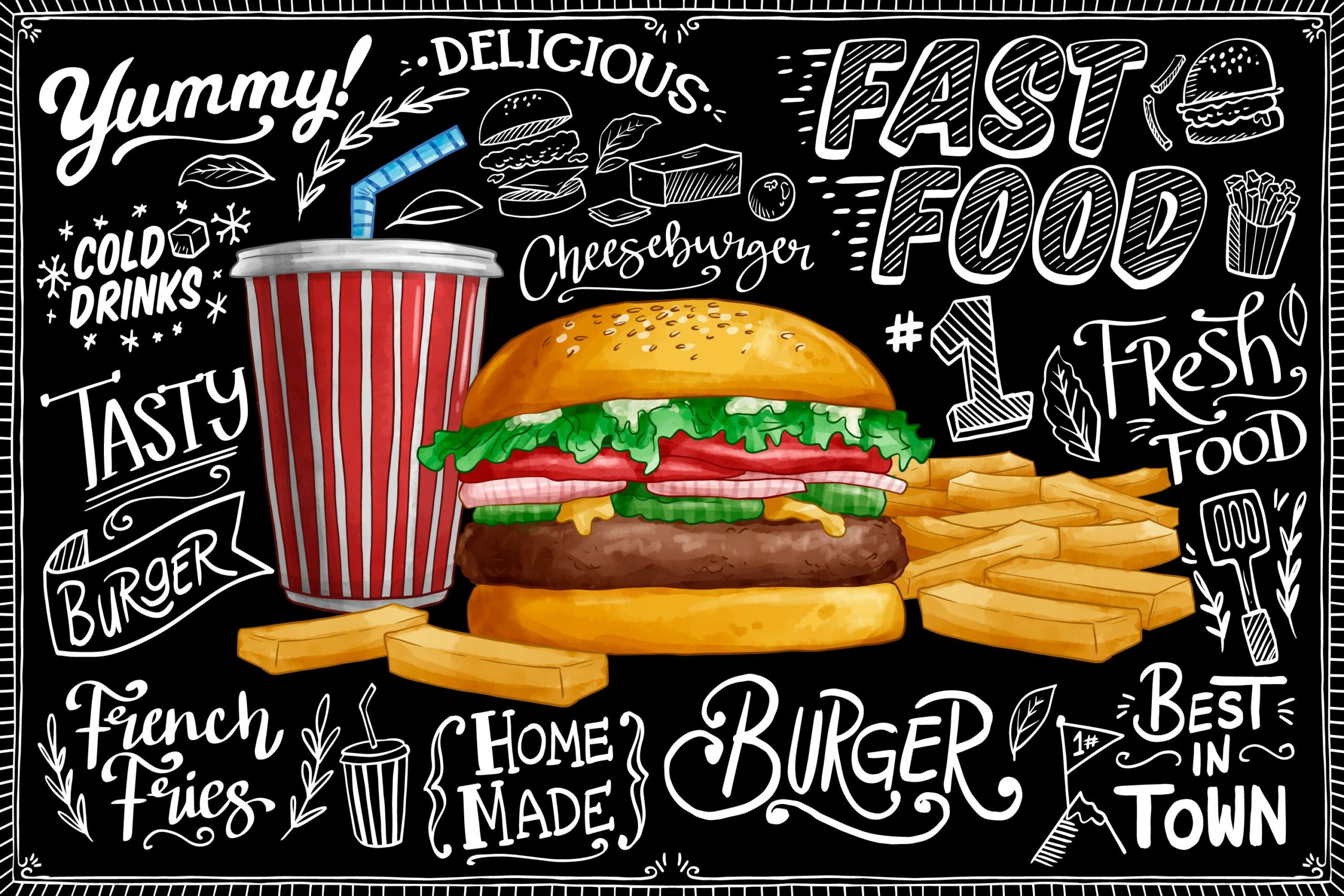Junk food is typically high in calories, sugar, and unhealthy fats. Fast food refers to quickly prepared meals, which can also be junk food.
TL;DR Junk food Vs. Fast food
TL;DR: Junk food is highly processed, low-nutrient food high in unhealthy fats, sugars, and additives. Fast food is quickly prepared cuisine, often high in calories and lacking essential nutrients.
Both can lead to weight gain, chronic illnesses, and mental health issues.
Choosing whole, nutritious options, planning meals, and cooking at home can help avoid these risks. Making healthy food choices boosts energy, strengthens the immune system, aids in weight management, and supports mental well-being.
What is junk food?

Junk food refers to highly processed and low-nutrient foods that are typically high in calories, unhealthy fats, sugars, and artificial additives.
Junk food often lacks essential nutrients such as vitamins, minerals, fiber, and protein. Instead, it offers empty calories that provide little to no nutritional value. These foods may be convenient and satisfying in the moment, but they can wreak havoc on our health if consumed regularly.
One common characteristic of junk food is its addictive nature. The combination of excessive sugar or salt content along with additives like artificial flavors can trigger pleasure responses in our brains.
This leads to overconsumption and difficulty breaking free from the grip of junk food cravings.
Potato chips, sugary sodas, candy bars bursting are all prime examples of junk food.
What is fast food?

Fast food refers to a type of cuisine that is characterized by its quick preparation and service. It’s the kind of food you can get at restaurants like McDonald’s, Burger King, or KFC.
Fast food is typically high in calories, unhealthy fats, sugar, and sodium. It often lacks essential nutrients like vitamins and minerals. Examples of common fast foods include burgers, fries, pizza, fried chicken, and hot dogs.
Junk food Vs. Fast food – Key differences
| Aspect | Junk Food | Fast Food |
|---|---|---|
| Preparation Method | Highly processed, prepackaged | Quickly cooked using grilling or frying |
| Nutritional Content | High in unhealthy fats, sugars, additives | High in calories, unhealthy fats, sodium |
| Common Examples | Candy bars, chips, sugary snacks | Burgers, fries, pizza, fried chicken |
| Nutrient Density | Low in essential nutrients | May lack essential nutrients depending on choice |
| Health Impact | Contributes to weight gain, chronic illnesses | Linked to obesity, heart disease, diabetes |
| Convenience | Readily available, minimal prep | Quick service, on-the-go options |
| Addiction Potential | High due to sugar, salt, additives | Can trigger cravings due to high sugar content |
| Cooking Time | Minimal | Quick cooking methods like frying |
| Focus on Ingredients | Emphasis on taste and shelf life | Focus on speed and convenience |
| Long-Term Health | Linked to long-term health risks | Can lead to health issues if consumed often |
| Moderation Importance | Should be consumed in moderation | Wise choices can mitigate negative effects |
The dangers of eating junk food and fast food
- Weight Gain and Obesity: Junk food and fast food are often high in calories, unhealthy fats, and sugars. Consuming them frequently can lead to excessive calorie intake and contribute to weight gain and obesity.
- Poor Nutrient Intake: These foods are typically low in essential nutrients such as vitamins, minerals, and fiber. This can lead to nutritional deficiencies and overall poor health.
- Heart Disease: Junk food and fast food are often high in trans fats, saturated fats, and sodium, which can elevate cholesterol levels and blood pressure, increasing the risk of heart disease and stroke.
- Type 2 Diabetes: Regular consumption of sugary foods and beverages can lead to insulin resistance, a precursor to type 2 diabetes.
- Digestive Issues: Lack of fiber in junk food can lead to digestive problems such as constipation and bloating.
How to avoid junk food and fast food
- Plan Your Meals: Prepare a weekly meal plan that includes nutritious, balanced meals and snacks. Having a plan in place reduces the temptation to opt for convenience foods.
- Cook at Home: Cooking your meals from scratch gives you control over ingredients and cooking methods, allowing you to make healthier choices.
- Stock Healthy Foods: Keep your kitchen stocked with fresh fruits, vegetables, whole grains, lean proteins, and healthy snacks to reduce the urge to grab junk food.
- Pack Snacks: When you’re on the go, carry nutritious snacks like nuts, seeds, cut fruits, or whole-grain crackers to avoid relying on vending machines or fast food outlets.
- Read Labels: Learn to read food labels to identify hidden sugars, unhealthy fats, and additives in packaged foods. Choose options with fewer processed ingredients.
Benefits of making healthy food choices
- Improved Energy Levels: Nutrient-rich foods provide sustained energy, helping you stay alert and active throughout the day.
- Weight Management: A balanced diet helps maintain a healthy weight by providing essential nutrients without excess calories.
- Strong Immune System: Nutrient-packed foods boost your immune response, reducing the risk of illnesses and infections.
- Reduced Risk of Chronic Diseases: Healthy eating lowers the chances of developing conditions like heart disease, diabetes, and certain cancers.
- Better Digestion: High-fiber foods support digestion, preventing issues like constipation and promoting gut health.
Image Credits
Featured Image By – brgfx on Freepik
Image 1 By – Image by Freepik
Image 2 By – Image by Freepik









